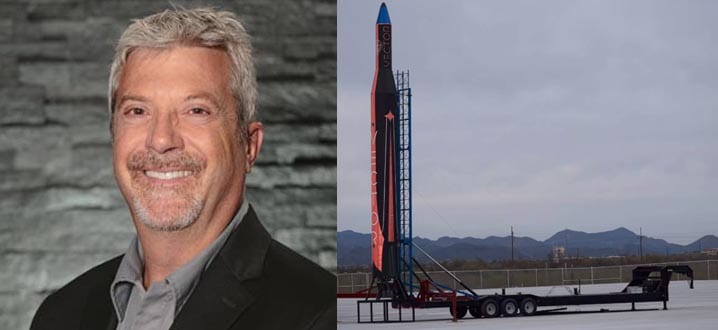Latest News

After establishing an impressive three-decade-long career at legacy aerospace companies Lockheed Martin and Xtar, Robert Cleave found himself in the C-suite at Vector, an Arizona-based new entrant to the U.S. launch services market. He joined the company last month, tasked with transforming the recently acquired $70 million in Series B capital into Vector’s first major sales and promotional campaign. He will support sales, business development and revenue-related activity for Vector. Just weeks into his job as Chief Revenue Officer (CRO), Cleave sat down with Via Satellite to share his thoughts on how to attract both traditional and new launch customers, the importance of affordable space access, and the influence of Silicon Valley on modern commercial space industry business models.
VIA SATELLITE: You’ve spent more than 30 years in the aerospace industry. What attracted you to join former colleagues, as well as some former competitors, on Vector’s executive board?
Cleave: At this stage of my career, I’m motivated to determine how space can best benefit humankind, and I firmly believe that costs and access are the two most important areas. Vector is an infrastructure play that brings both. Our launch vehicles are the most affordable on the market, and will allow new companies and countries to deploy satellites with great efficacy. But I’m even more stoked about GalacticSky, which is a capability never before seen in our industry, and which will create superior access to disadvantaged users while supporting air-space integration. Secondarily, I was motivated by the team, which consists of a solid mix of scarred graybeards with energetic youth. As a result, I’ve never been happier or more fulfilled than now, and for that I am honored to be called a “Vectornaut.”
VIA SATELLITE: Vector’s mission statement and business model is focused on providing affordable access to space for a wider range of clientele. How many new cost-conscious space-faring customers do you think Vector can put into orbit?
Cleave: The launch is truly a point-to-point business, and while many economists focus on costs, they often miss the concept of value delivery. Having the ability to go when you want, where you want, and at the frequency you want, offers unheralded potential. Today, humans only exploit one of three properties offered by space — the ability to have a unique perspective. There are two other properties, which include microgravity and vacuum. This is why I’m so bullish on space, and believe the market can be even greater than what we see in various Wall Street reports.
Furthermore, we recently published an article that determined the cost to deploy an Internet of Things (IOT) satellite is $30 million. For most Fortune 500 companies, their IT budget significantly exceeds this amount, meaning all those companies can have their own bespoke proprietary systems simply for internal usage. This insightful analysis leads me to believe the market is actually much bigger than many anticipate.
Finally, many countries are realizing that space is really part of their core infrastructure, to be treated no differently than any other utility. We are in the process of writing another paper based on research we’ve developed that will hopefully help any country develop an indigenous space-based capability, supporting the so-called democratization of space.
VIA SATELLITE: Vector allows anyone to sign up for launches simply by filling out a form on the company’s website. Are both traditional and new launch customers actually using the portal?
Cleave: The space business is fairly antiquated when it comes to modern lead generation capabilities, and we are blessed to have a Silicon Valley marketing organization that recognizes the tools and techniques used by almost every Business to Business (B2B), Business to Government (B2G), Business to Consumer (B2C), and Online to Offline (O2O) company. Watch this space — more innovation will be brought to our industry than ever seen before.
VIA SATELLITE: What do you like most about the Vector-R and -H rockets? What makes them unique?
Cleave: In my experience, success is defined by the architecture, and the Vector launch vehicles were designed for easier production. We have approximately one-third the part count of a single Merlin engine, which means we can build them quickly and inexpensively. I firmly believe a customer will be able to order a launch, and we will be able to build the launch vehicle in less time than it takes them to perform assembly, integration, and testing on the satellite. This means we can implement lean manufacturing techniques found in the automotive industry, providing value to shareholders and customers.
VIA SATELLITE: Why launch out of Alaska? What are the unique challenges/benefits?
Cleave: Alaska was a logical place to start launching for several reasons, although we anticipate our projected launch rates are going to exceed their licensing rights. There are many benefits including physics and availability; challenges include logistics and certain consumable costs.
VIA SATELLITE: What’s the next big project on your to-do list?
Cleave: The next major project on the horizon is GalacticSky deployment, coupled with building and expanding the talent within the organization. I’m blessed by those that chose this organization and I want to ensure they have meaningful career growth. Our greatest asset leaves the building every day, and frankly I work for them. It’s all about the people.
Get the latest Via Satellite news!
Subscribe Now